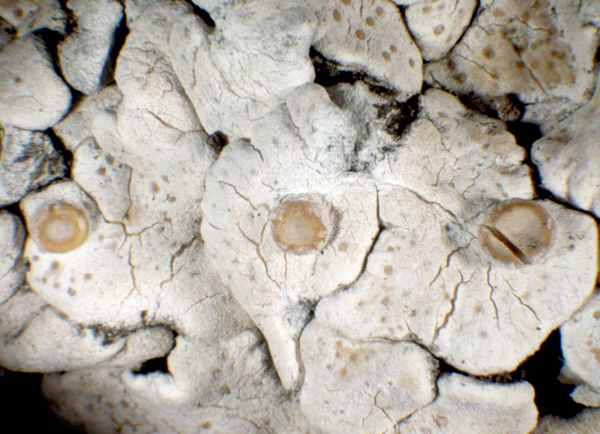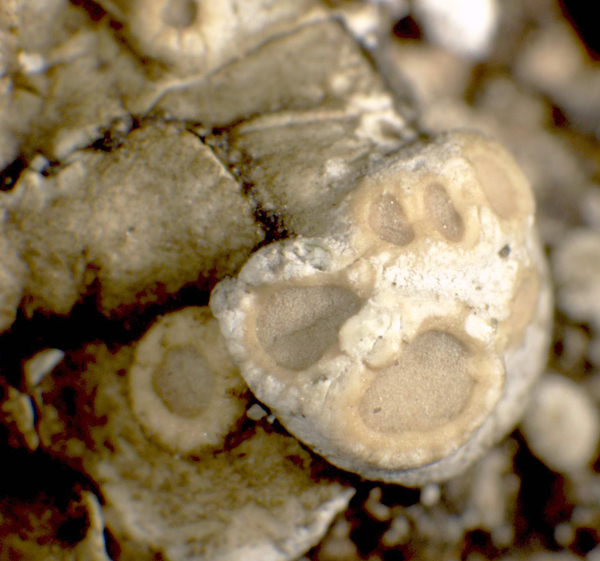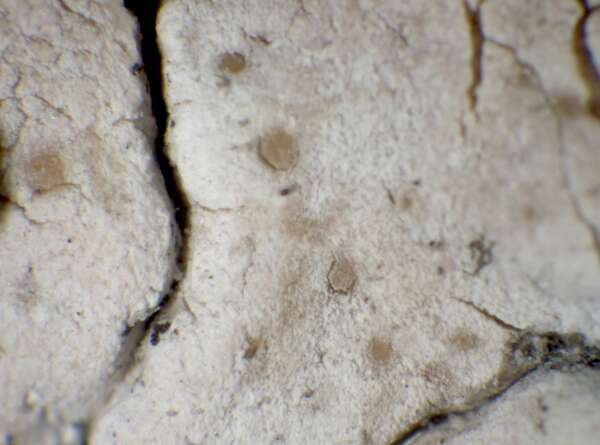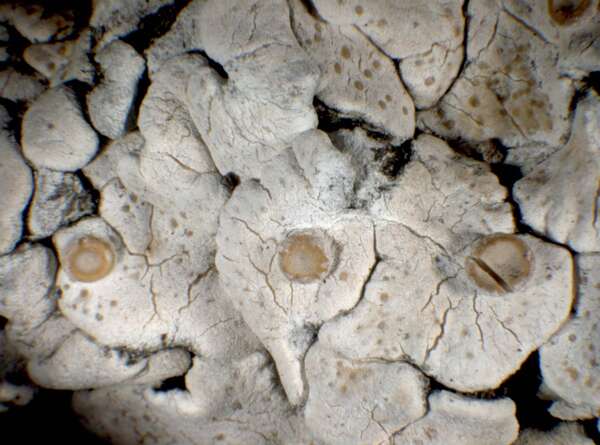Squamarina periculosa (Schaer.) Poelt
Mitt. bot. Staatss. München, 2: 534, 1958. Basionym: Lecanora crassa var. periculosa Dufour ex Schaer. - Enum. Crit. Lich. Eur.: 58, 1850.
Synonyms: Placolecanora crassa var. tricolor B. de Lesd.
Distribution: N - VG, Frl (Martellos 2005), TAA, Lomb, Piem (TSB 33149), VA (Piervittori & Isocrono 1999), Lig. C - Tosc (Benesperi 2007), Sar. S - Camp (Altieri & al. 2000, Roccardi & Ricci 2006), Cal (Puntillo 1996).
Description: Thallus subcrustose to squamulose, very thick (to 6 mm), pale yellowish green but usually thinly white-pruinose throughout, forming large, more or less regular up to more than 10 cm wide rosettes, the marginal squamules flattened, slightly elongated c. 2-3 mm long, the central ones convex, irregularly imbricate and often subcrustose-areolate; lower surface pale to blackish, with concolorous, poorly evident, thread-like, branched rhizinoid strands. Upper cortex paraplectenchymatous; medulla white, very thick. Apothecia frequent, lecanorine, up to 8 mm across, with a thick, prominent, persistent, strongly pruinose thalline margin, a well-differentiated proper margin and a more or less flat, greenish to pale ochraceous, sometimes yellowish- to bluish-pruinose disc. Epithecium 5-10 μm thick, with a superficial layer of crystals; hymenium colourless, c. 50 μm high, hemiamyloid; hypothecium colourless. Asci 8-spored, elongate-clavate, with a thin, outer amyloid layer and a thickened, amyloid tholus devoid of an ocular chamber, penetrated by an axial tube the sides of which stain I+ deeper blue, approaching the Porpidia-type. Ascospores 1-celled, hyaline, ellipsoid, (12.5-)14-17(-18.5) x (4-)4.5-5.5(-6) μm. Pycnidia common and often abundant, immersed. Conidia thread-like, curved. Photobiont chlorococcoid. Spot tests: upper cortex K-, C-, KC- or KC+ yellowish, P-; apothecial margin P- or rarely P+ yellowish. Chemistry: cortex with usnic and isousnic acids; apothecial margins with or without psoromic and 2ʹ-O-demethylpsoromic acids. Note: in fissures of steeply inclined surfaces of calciferous rocks, with optimum in lowland areas.
Growth form: Squamulose
Substrata: rocks
Photobiont: green algae other than Trentepohlia
Reproductive strategy: mainly sexual
Commonnes-rarity: (info)
Alpine belt: absent
Subalpine belt: absent
Oromediterranean belt: absent
Montane belt: extremely rare
Submediterranean belt: very rare
Padanian area: absent
Humid submediterranean belt: very rare
Humid mediterranean belt: very rare
Dry mediterranean belt: very rare
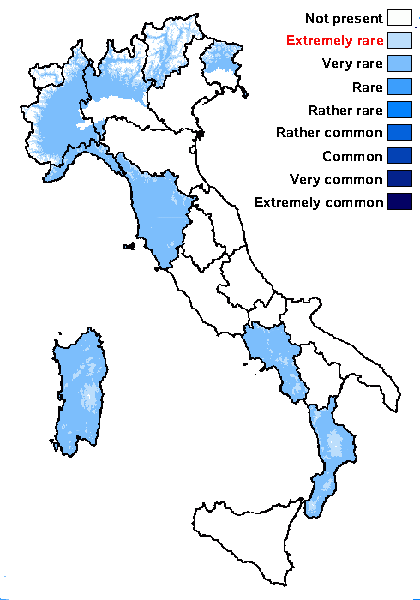
Predictive model
Herbarium samples

Courtesy Danièle et Olivier Gonnet - Source: https://www.afl-lichenologie.fr/Photos_AFL/Photos_AFL_S/Squamarina_periculosa.htm
France, session AFL 2010 - Hérault
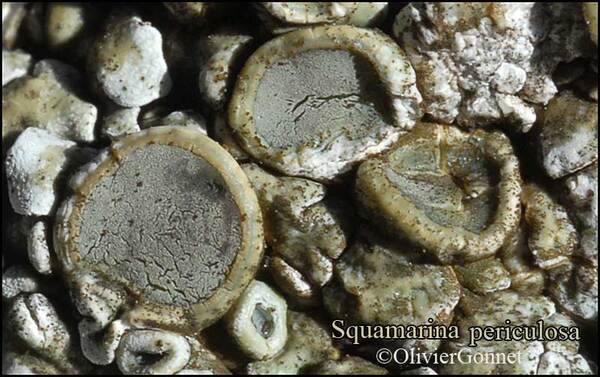
Courtesy Danièle et Olivier Gonnet - Source: https://www.afl-lichenologie.fr/Photos_AFL/Photos_AFL_S/Squamarina_periculosa.htm
France, session AFL 2010 - Hérault
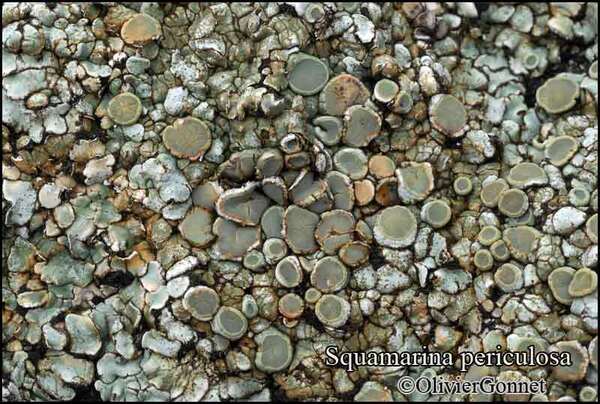
Courtesy Danièle et Olivier Gonnet - Source: https://www.afl-lichenologie.fr/Photos_AFL/Photos_AFL_S/Squamarina_periculosa.htm
France, session AFL 2010 - Hérault
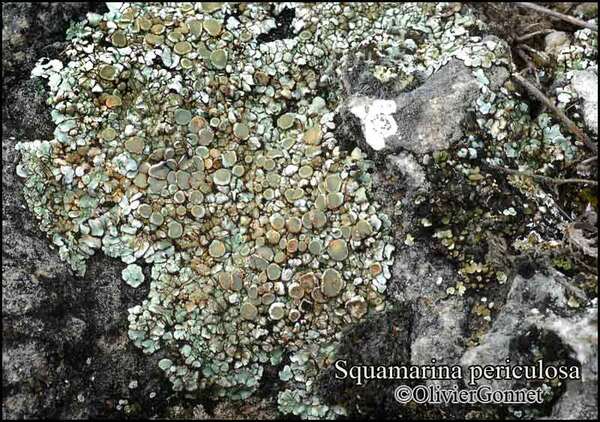
Courtesy Danièle et Olivier Gonnet - Source: https://www.afl-lichenologie.fr/Photos_AFL/Photos_AFL_S/Squamarina_periculosa.htm
France, session AFL 2010 - Hérault
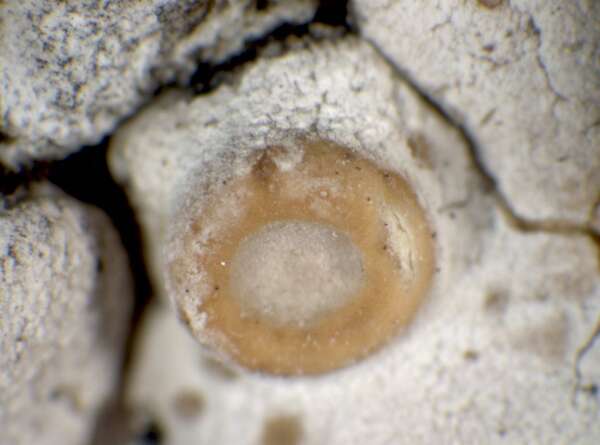

P.L. Nimis; Owner: Department of Life Sciences, University of Trieste
Herbarium: TSB (18144)
2001/12/11
apothecium
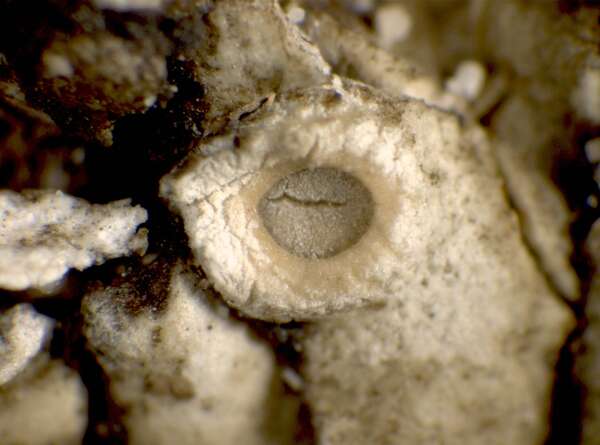

P.L. Nimis; Owner: Department of Life Sciences, University of Trieste
Herbarium: TSB (13222)
2001/11/30
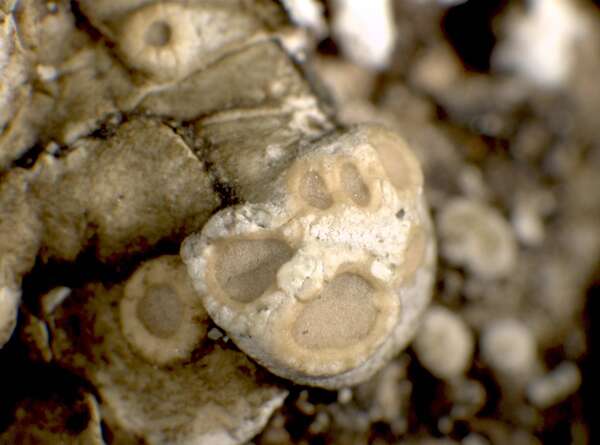

P.L. Nimis; Owner: Department of Life Sciences, University of Trieste
Herbarium: TSB (13222)
2001/11/30
Growth form: Squamulose
Substrata: rocks
Photobiont: green algae other than Trentepohlia
Reproductive strategy: mainly sexual
Commonnes-rarity: (info)
Alpine belt: absent
Subalpine belt: absent
Oromediterranean belt: absent
Montane belt: extremely rare
Submediterranean belt: very rare
Padanian area: absent
Humid submediterranean belt: very rare
Humid mediterranean belt: very rare
Dry mediterranean belt: very rare

Predictive model
| Herbarium samples |

Courtesy Danièle et Olivier Gonnet - Source: https://www.afl-lichenologie.fr/Photos_AFL/Photos_AFL_S/Squamarina_periculosa.htm
France, session AFL 2010 - Hérault

Courtesy Danièle et Olivier Gonnet - Source: https://www.afl-lichenologie.fr/Photos_AFL/Photos_AFL_S/Squamarina_periculosa.htm
France, session AFL 2010 - Hérault

Courtesy Danièle et Olivier Gonnet - Source: https://www.afl-lichenologie.fr/Photos_AFL/Photos_AFL_S/Squamarina_periculosa.htm
France, session AFL 2010 - Hérault

Courtesy Danièle et Olivier Gonnet - Source: https://www.afl-lichenologie.fr/Photos_AFL/Photos_AFL_S/Squamarina_periculosa.htm
France, session AFL 2010 - Hérault


P.L. Nimis; Owner: Department of Life Sciences, University of Trieste
Herbarium: TSB (18144)
2001/12/11
apothecium


P.L. Nimis; Owner: Department of Life Sciences, University of Trieste
Herbarium: TSB (13222)
2001/11/30


 INDEX FUNGORUM
INDEX FUNGORUM
 GBIF
GBIF
 DOLICHENS
DOLICHENS
